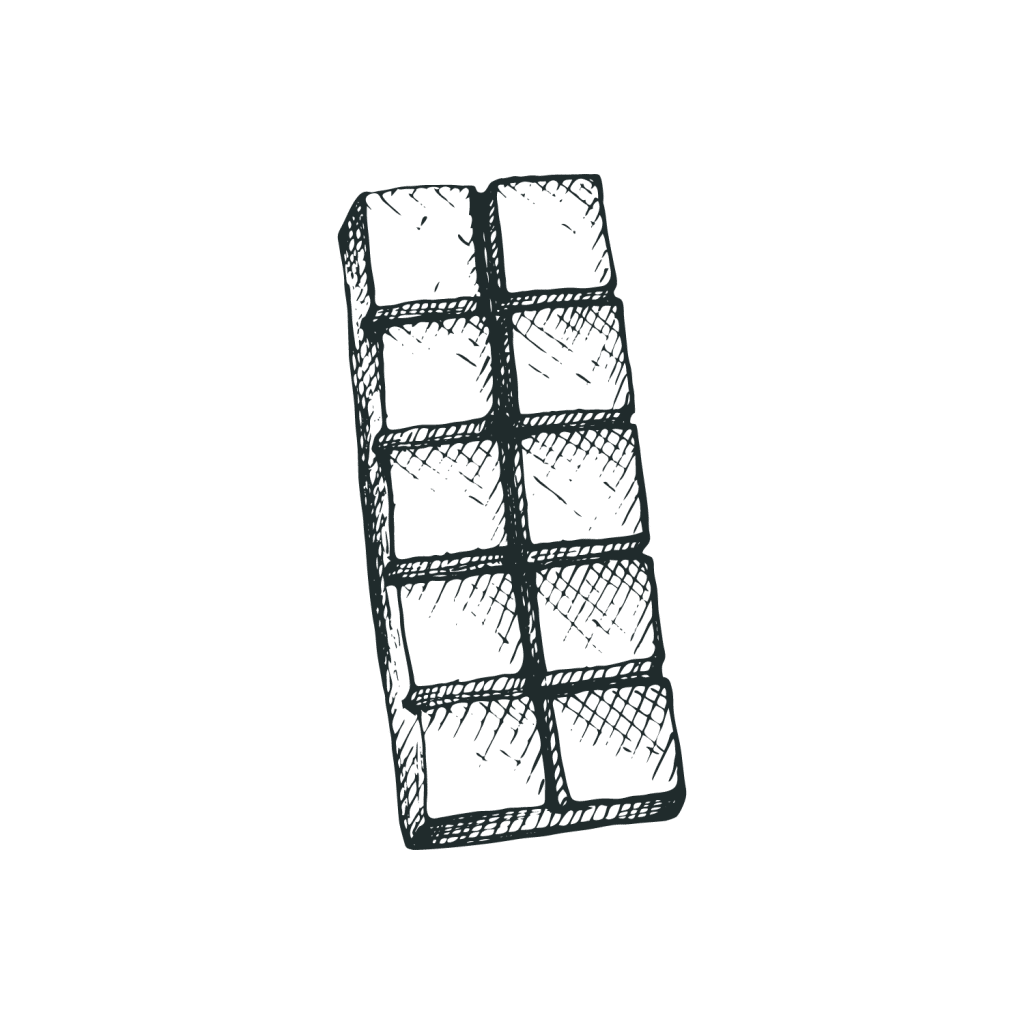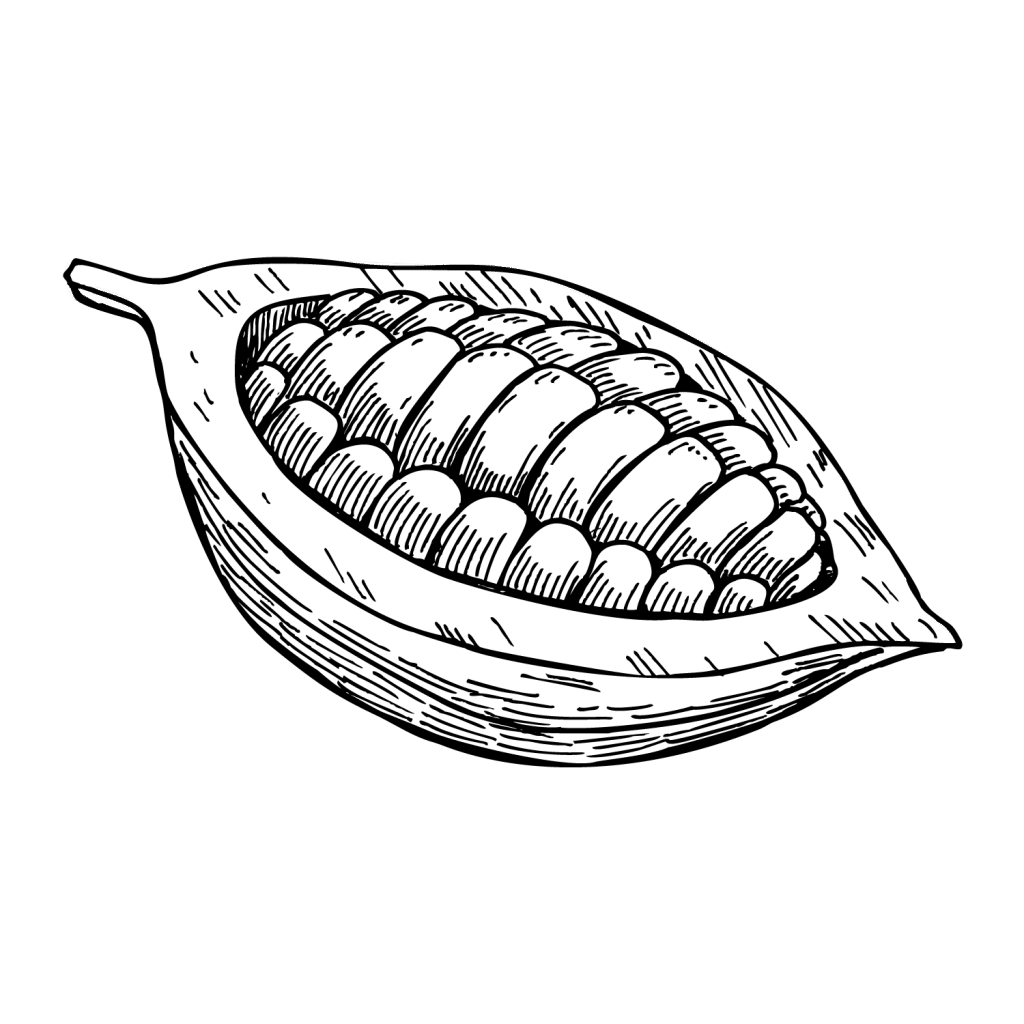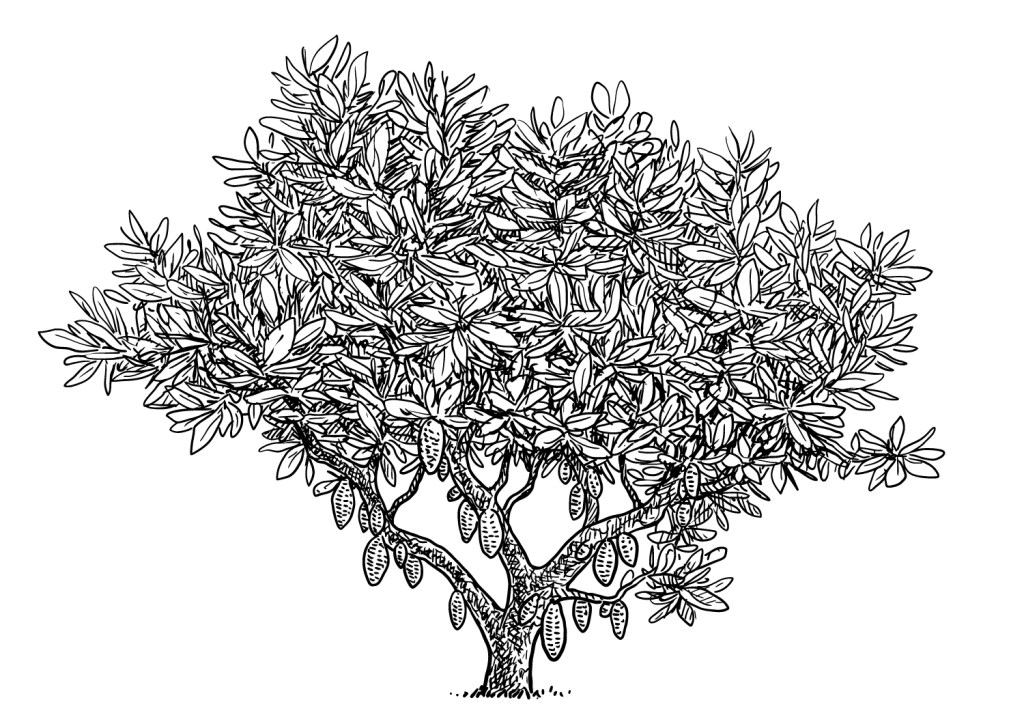What is Cacao?.The cacao tree (Theobroma cacao) produces large fruits — called pods. These pods contain small, bitter seeds called cacao beans.
Cacao has a wealth of health benefits. It’s used to protect the heart and brain from oxidative damage, reduce inflammation, promote focus and concentration, and support various mood disorders.
A cacao ceremony is a practice of drinking cacao for the purpose of self-growth. It’s thought to create the conditions necessary to have ego-dissolution experiences, reach deeper levels of meditation, and feel more connected with other people.
When we talk about the health benefits of cacao or cacao ceremonies, we’re referring specifically to the pure cacao seeds rather than chocolate or cocoa, which are made by processing the cacao seeds with oils and sweeteners.
The flavor of cacao is very different from chocolate. It’s highly bitter and has stimulating and euphoric qualities. Chocolate lacks these qualities and isn’t suitable for use in a proper cacao ceremony.
Cacao is primarily used as a health beverage and for the purpose of self-growth and spiritual development.

What’s The Difference Between Cocoa, Cacao, & Chocolate?
Cacao is the precursor for cocoa. It’s made from the raw seeds of the cacao pod before it’s roasted and mixed with cocoa butter — which is the fat derived from the rest of the cacao pod.
Cacao contains a much higher concentration of polyphenols, tryptophan, and xanthine alkaloids than cocoa — but also has a strong bitter taste.
Cocoa is mixed with sweeteners, other fats, and dairy products to make chocolate.
There are three different types of chocolate:
- Dark chocolate — contains a higher concentration of cacao (35–80% cacao)
- Milk chocolate — made by combining cocoa powder with condensed milk, sugar, and butter (10–12% cacao)
- White chocolate — made only from the cocoa butter, sweeteners, and dairy products (does not contain cacao)
The cacao used ceremonially is different from chocolate — yes, even dark chocolate. It usually contains between 90 and 99% cacao by weight without any added sugar, dairy, or fat. It’s also important for the cacao to be sourced ethically and processed without roasting for it to be considered “ceremonial grade.”
What Are The Benefits of Cacao?
Cacao has many health benefits, most of which come from the physical ingredients in the cacao seed — such as magnesium, theobromine, tryptophan, zinc, iron, and a variety of polyphenols.
Other benefits come from the ceremony and meditation that accompany traditional cacao drinking — such as stress reduction, mindset development, and a greater sense of empathy and connection with the self and others.
The main goal of a cacao ceremony is to develop a deeper connection with the self.
Outside of ceremonial use, cacao offers benefits through its stimulating and mood-enhancing effects and from the rich concentration of trace minerals, vitamins, and antioxidants.
The benefits of cacao include:
- Increases mental & physical energy
- Induces a mild euphoric state
- Improves focus & creativity
- Makes us feel more connected with others
- Highly nutritive (rich in zinc, magnesium, and iron)
- Natural source of tryptophan & anandamide
- Protects the cells from oxidative damage
- May lower blood pressure
- Protects the heart & brain
- Regulates blood sugar & insulin levels
- May offer some protection against certain kinds of cancer

What’s The Dose of Cacao?
The standard ceremonial dose of cacao is 40 grams (1.5 oz) of raw cacao.
The ideal dose may be different for you, so start with a smaller dose if this is your first time. Some people are sensitive to cacao and may feel uncomfortable side-effects like anxiety, dizziness, high blood pressure, nausea, or a rapid heart rate.
Start at a smaller dose of around 15 grams, and only take more if it feels right for your body:
- 15 mg Cacao — Low dose. This dose is best for beginners, people who are sensitive to cacao, or those that tend to experience difficulties breaking down fats.
- 30 mg Cacao — Intermediate dose. This dose is ideal for social gatherings.
- 40 mg Cacao — Full ceremonial dose. This is considered the standard ceremonial dose.
- 50+ mg Cacao — Strong dose. It’s only recommended for experienced cacao drinkers.
What Does Cacao Feel Like?
Cacao isn’t considered psychoactive in the traditional sense. It won’t make you feel high, and it doesn’t induce an altered state of consciousness.
Most people report feeling blissful and euphoric while drinking cacao. They feel as though they can enter flow states more easily, experience a greater level of connection with others, and may feel a burst of energy.
While cacao is a stimulant, it feels different from other stimulants like caffeine. You feel like you have more energy but without the anxious or jittery side effects.
The active ingredient, theobromine, is a mirror image of caffeine’s molecular structure. It provides many of the same stimulating effects that promote increase mental alertness, focus, and creativity — but with some differences.
Cacao also contains a compound called anandamide — which is often referred to as the “bliss molecule.” This compound works to regulate homeostasis via the endocannabinoid system (which is also the target for CBD from cannabis plants).
The anandamide content in cacao is thought to provide most of the euphoric and “heart-opening” effects from drinking cacao.
How Long Does Cacao Last?
The effects of cacao take about 20 to 30 minutes to appear and usually last around 3 to 5 hours in total. The more you drink, the longer it lasts.
About The Cacao Plant (Theobroma cacao)
The cacao tree (Theobroma cacao) — aka the chocolate tree — grows in tropical rainforests throughout Southern Mexico, Central America, and the Amazon rainforest.
It’s considered an understory plant — which means it prefers growing beneath the cover of large canopy trees where it’s cooler and darker.
This tree grows to a height of around 5 meters (16 feet) and sports small, reddish flowers. These flowers appear consistently throughout the year and develop into a yellow or red-colored fruit. This fruit is what cacao and chocolate are made from.
The seeds of the plant are high in fat (40–60%) and about 2% theobromine — which is responsible for the stimulating effects of the plant.

What Are The Active Ingredients of Cacao?
The active ingredients of cacao can be separated into three groups:
- Antioxidants — including epicatechin, catechin, and procyanidins
- Xanthine Alkaloids — including caffeine & theobromine
- Minerals & Nutrients — including magnesium, calcium, iron, & zinc
- Neurochemical Precursors — including tryptophan, phenethylamine, tyramine, tryptamine, tyrosine, & anandamide
The xanthine alkaloids are a class of central nervous stimulants related to caffeine. Although cacao contains caffeine, the total concentration is very low. The most abundant ingredient is theobromine, which is a mirror image of caffeine. It activates the adrenergic receptors like caffeine but in a slightly different way.
Theobromine is a stimulant, but its effects are more subtle and less likely to lead to anxiety or jitteriness compared to caffeine. It also has a higher affinity for widening the airways to allow for more air to flow into the lungs.
The third group, vitamins and minerals offer health benefits through nutritional support. Cacao is particularly high in iron and magnesium. Iron is required for red blood cell production, and magnesium serves as a cofactor for over 300 individual enzymatic reactions. We need magnesium to make hormones, neurotransmitters, bones, skin cells, and much more.
Cacao is also particularly rich in polyphenols — such as catechins and anthocyanidins. Most of these polyphenols have well-known antioxidant or anti-inflammatory properties.
A 100 gram serving of ceremonial cacao contains:
- Polyphenols — 11–13%
- Theobromine — 2–3%
- Caffeine — 0.2%
- Magnesium — 272 mg
- Sugars — 6.3 grams
- Fiber — 12.7 grams
- Iron — 9.1 mg
- Calcium — 888 mg
- Zinc — 3.3 mg
The Cacao Ceremony: What Is It & Why Should I Be Interested?
Cacao has a long history of ceremonial use. It was used for healing and ritual — as a way to connect with a higher state of health and conscious awareness.
The cacao ceremony serves a similar purpose to more conventional psychoactive substances such as ayahuasca, peyote, or magic mushrooms. But it achieves similar results without forcing you into a psychedelic experience. Cacao is much more subtle and can be used on a daily basis.
Instead of inducing ego death and dissolution or forcing a sense of presence and connection, cacao merely sets up the conditions we need to reach these experiences on our own.
The cacao ceremony is a big part of this. Drinking cacao can increase energy and focus, but there’s so much more depth to this practice when used alongside some sort of ritual and intention-setting.
Cacao ceremonies were practiced by the Mayan, Aztec, and Olmec civilizations for thousands of years. The practice continues today, but it looks much different now. Many people who engage in cacao ceremonies employ other techniques to the practice as well, such as breathwork, yoga, meditation, and journaling.
The point of using cacao ceremonially is to establish a habit or ritual around its use. The goal is to improve overall health and well-being, reach deeper levels of meditation, and offer a tool for self-growth and development in almost all aspects of life.
Some people use cacao as part of their routine to enter deeper flow states with work or creative endeavors or to help develop a better mindset and live more presently. This practice complements the use of psychedelics, meditation, and other techniques people are using as a means of self-growth and discovery